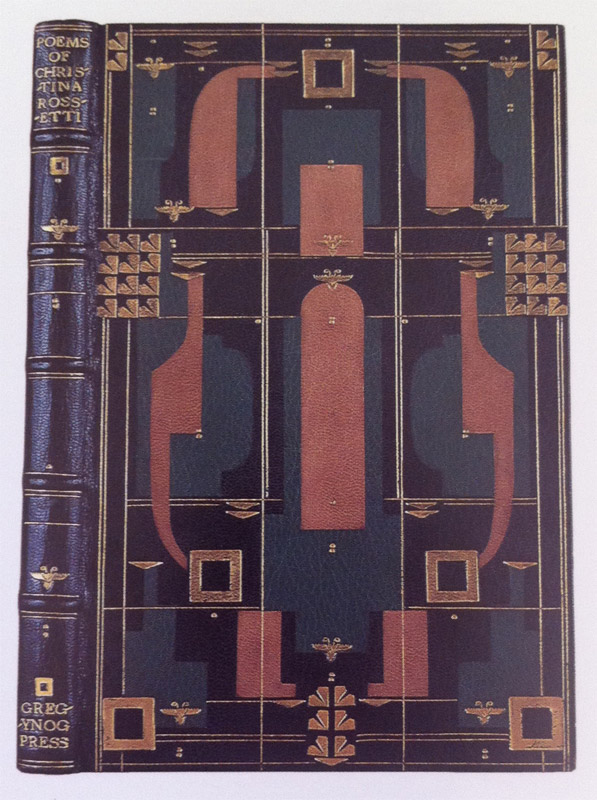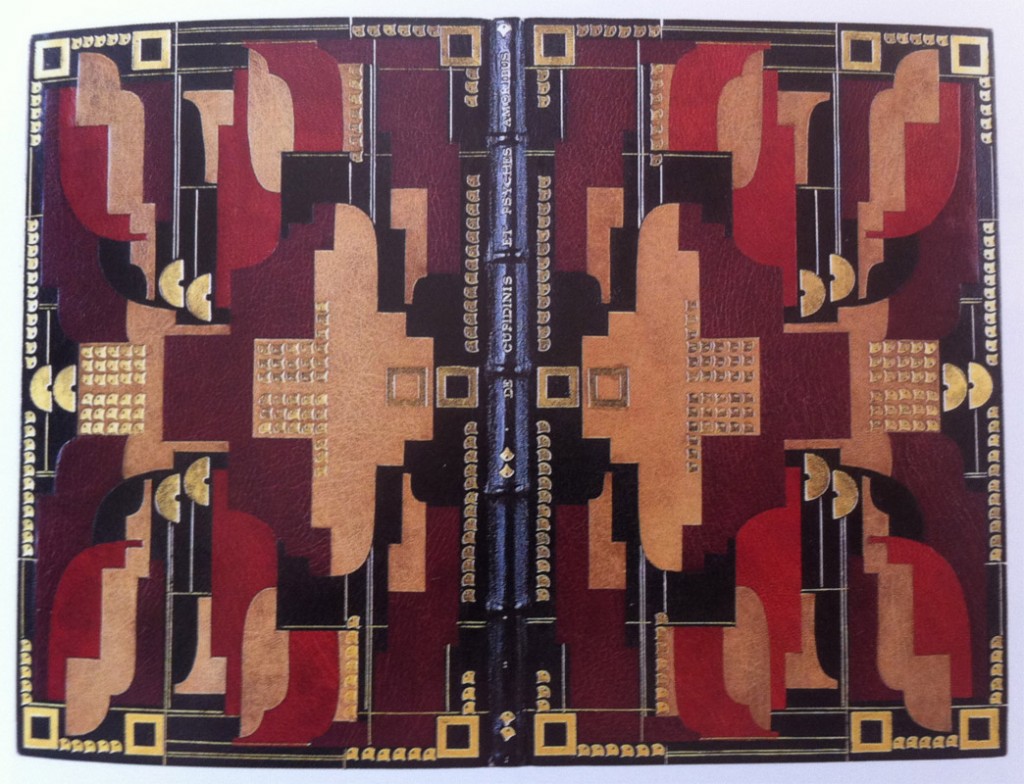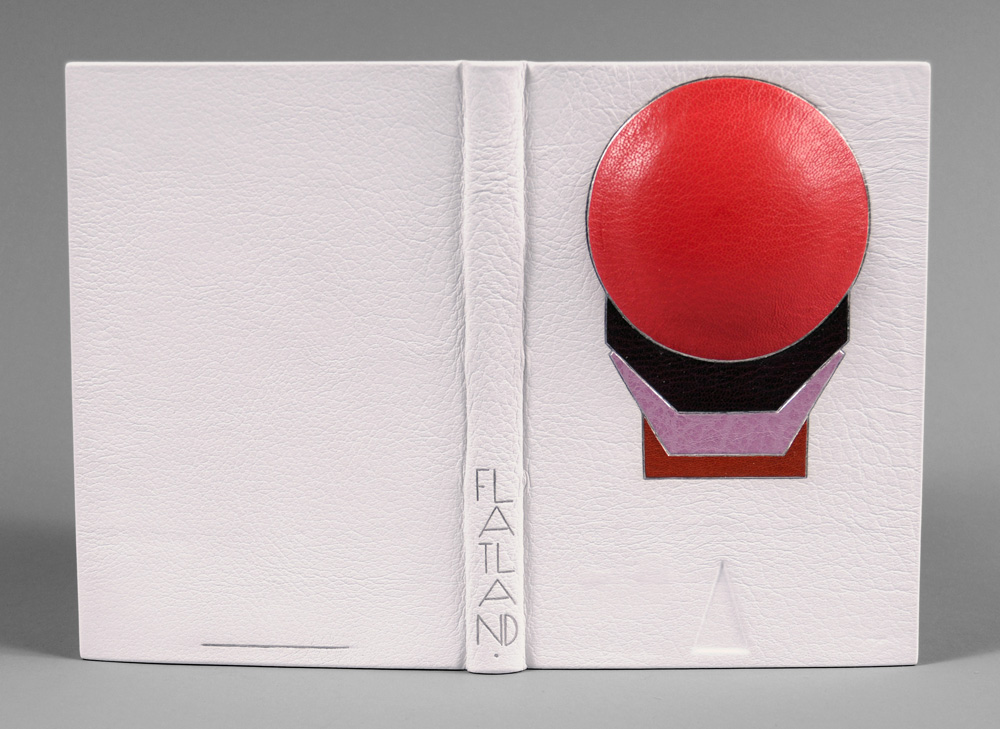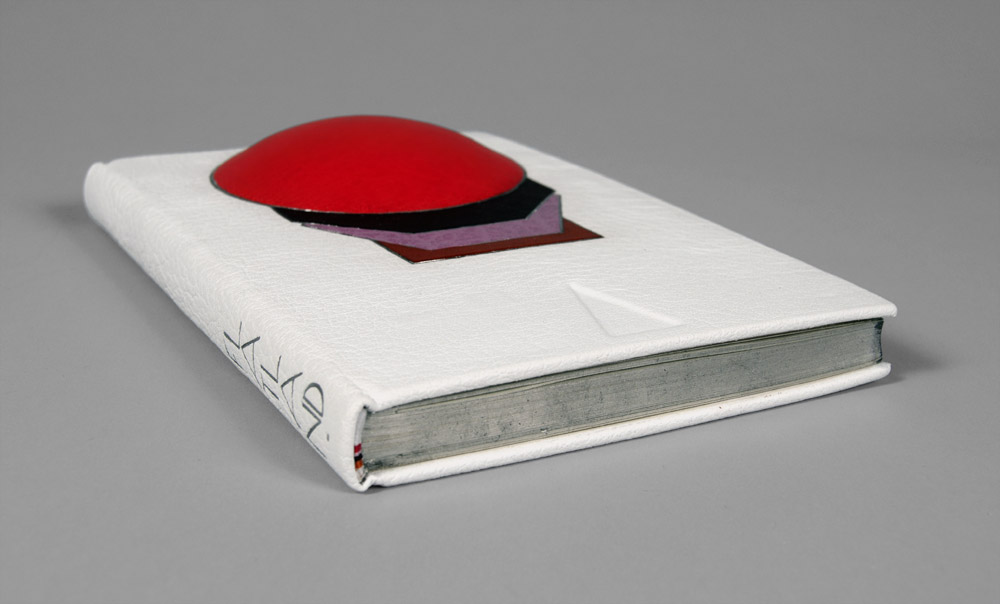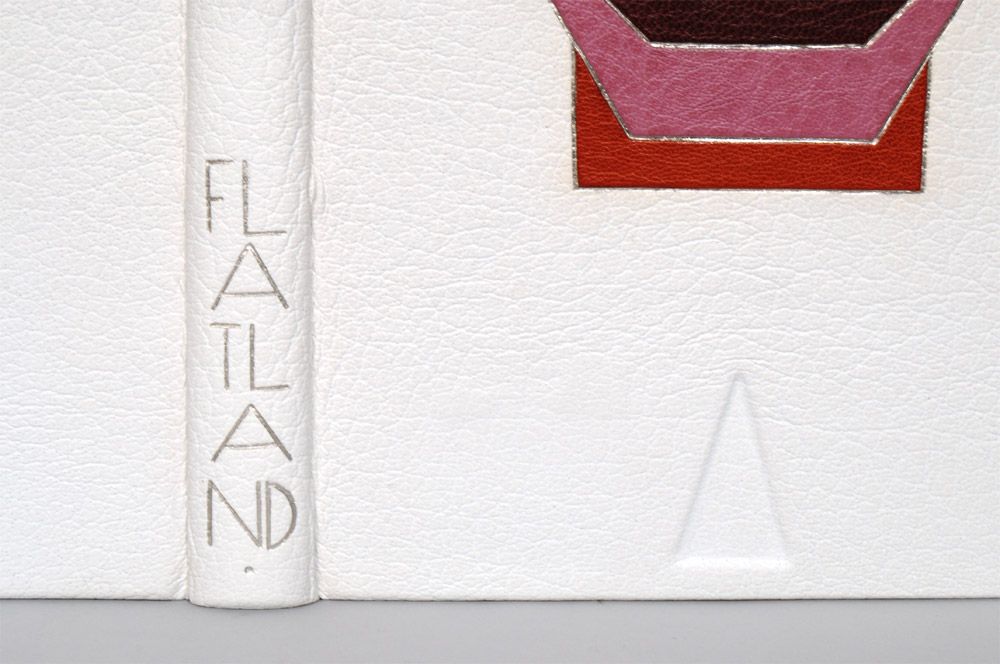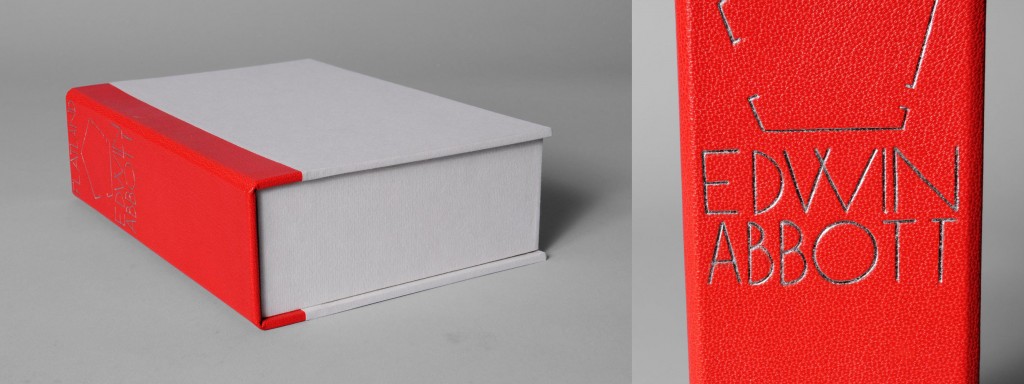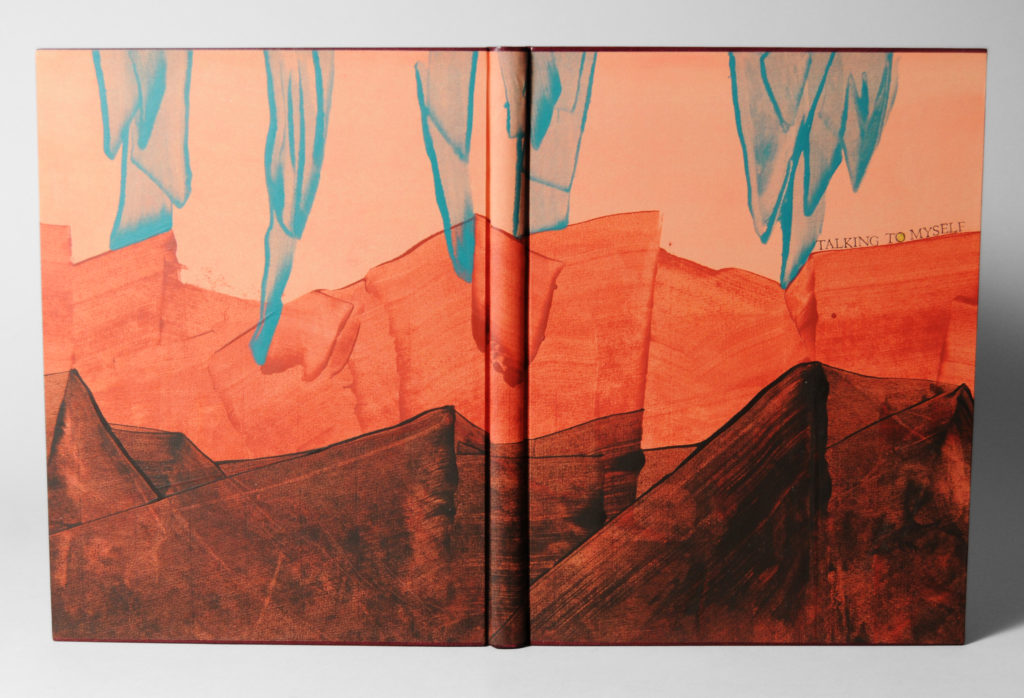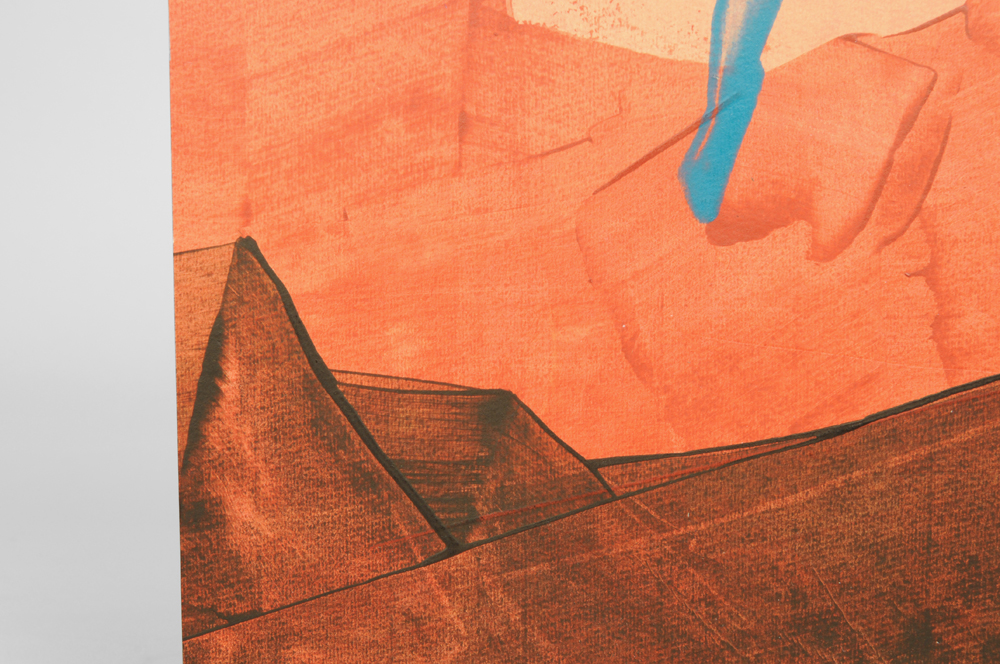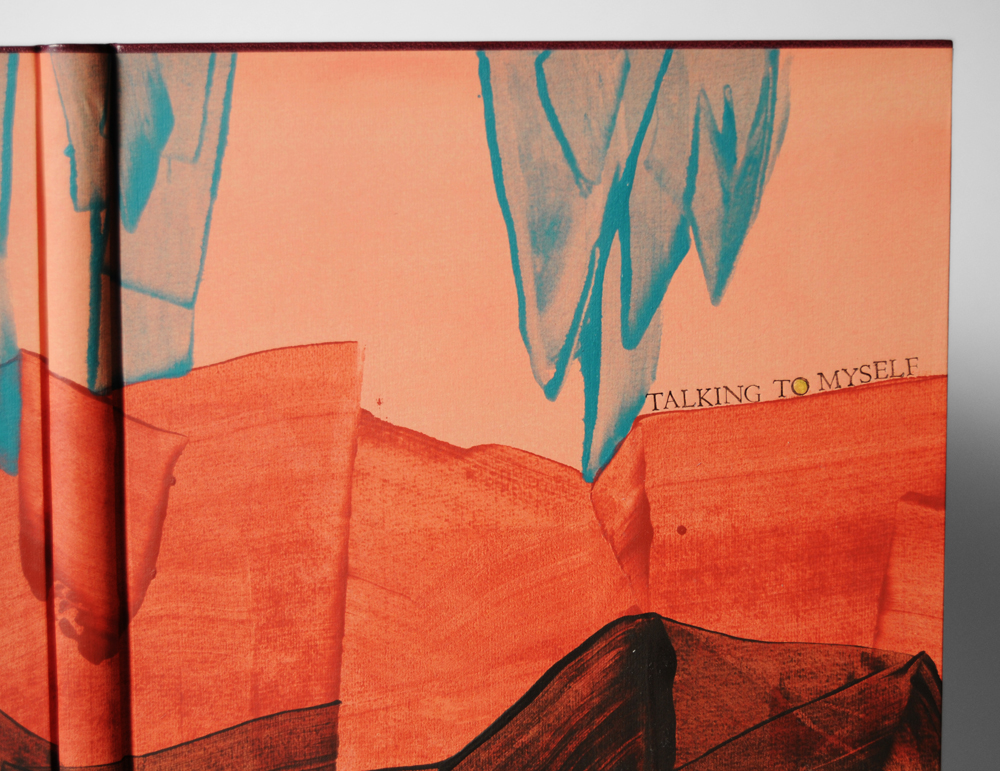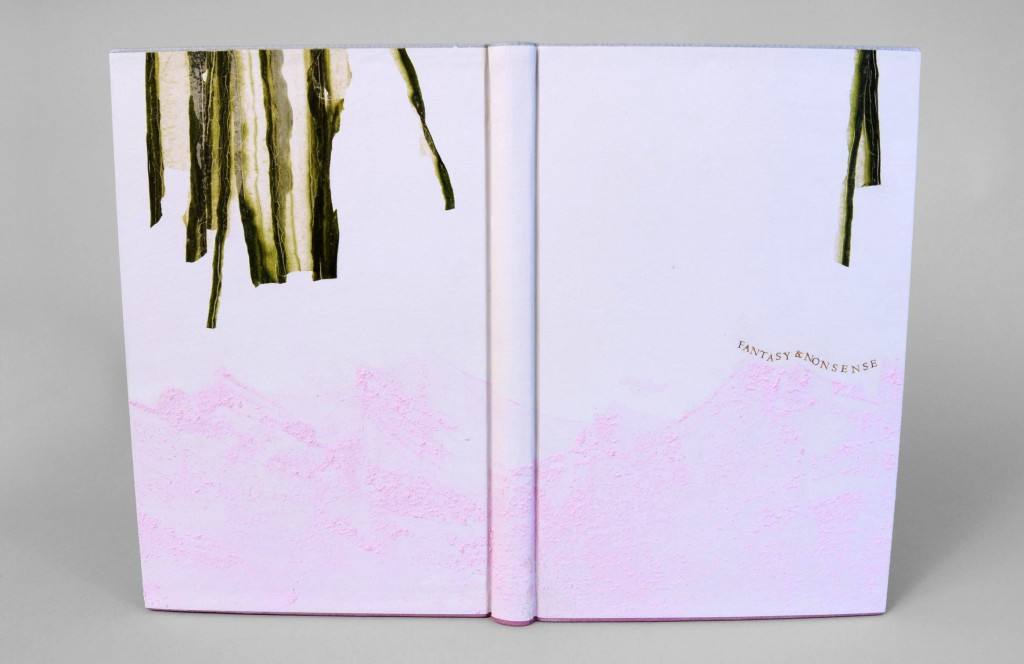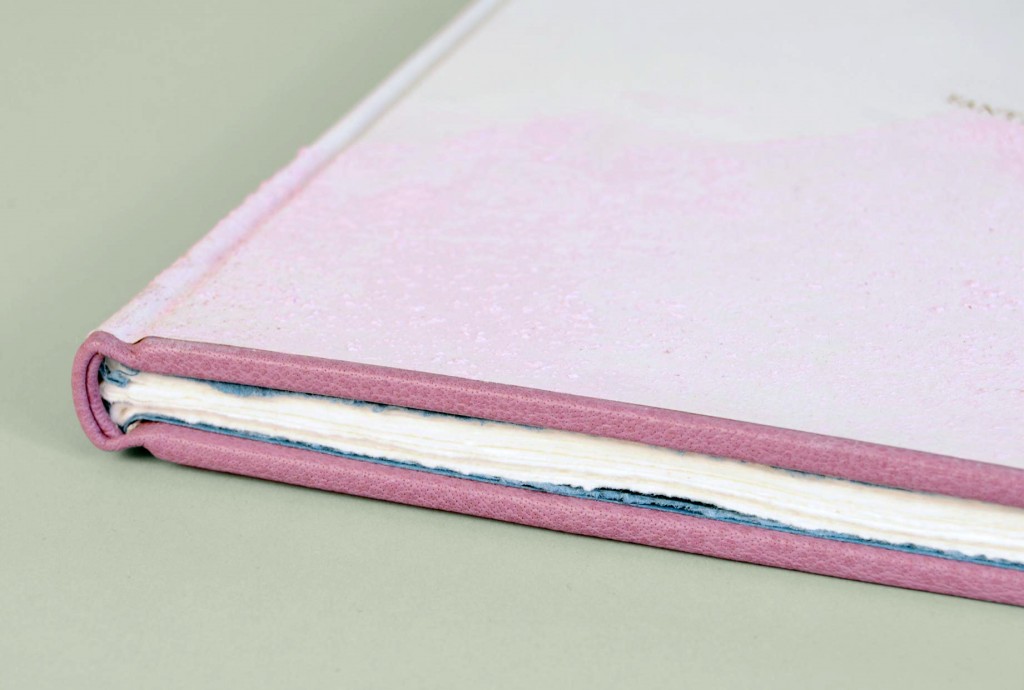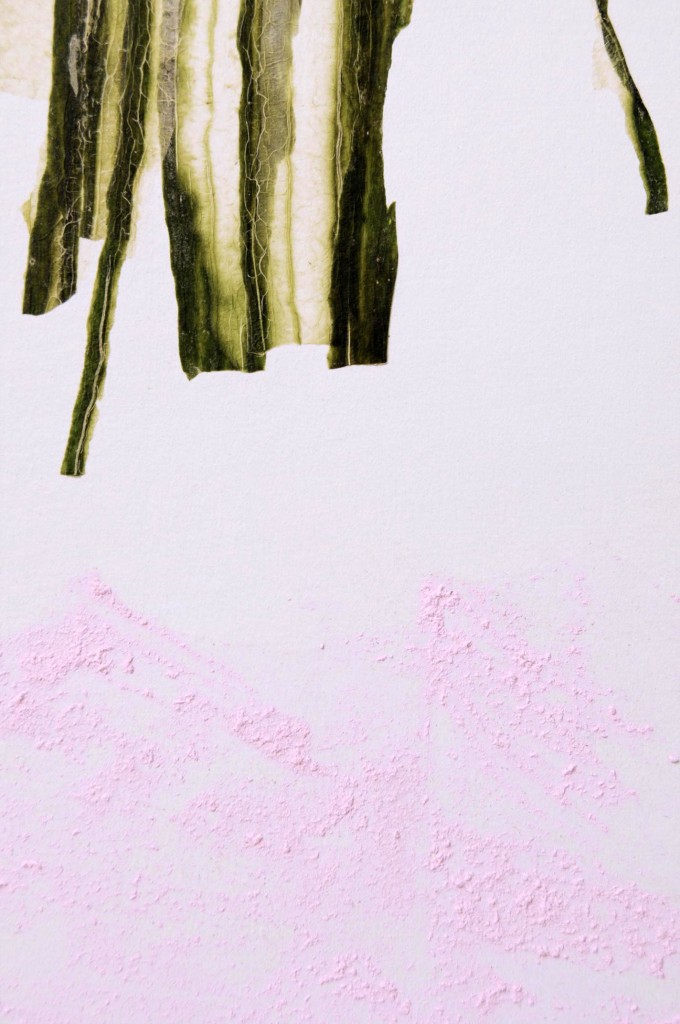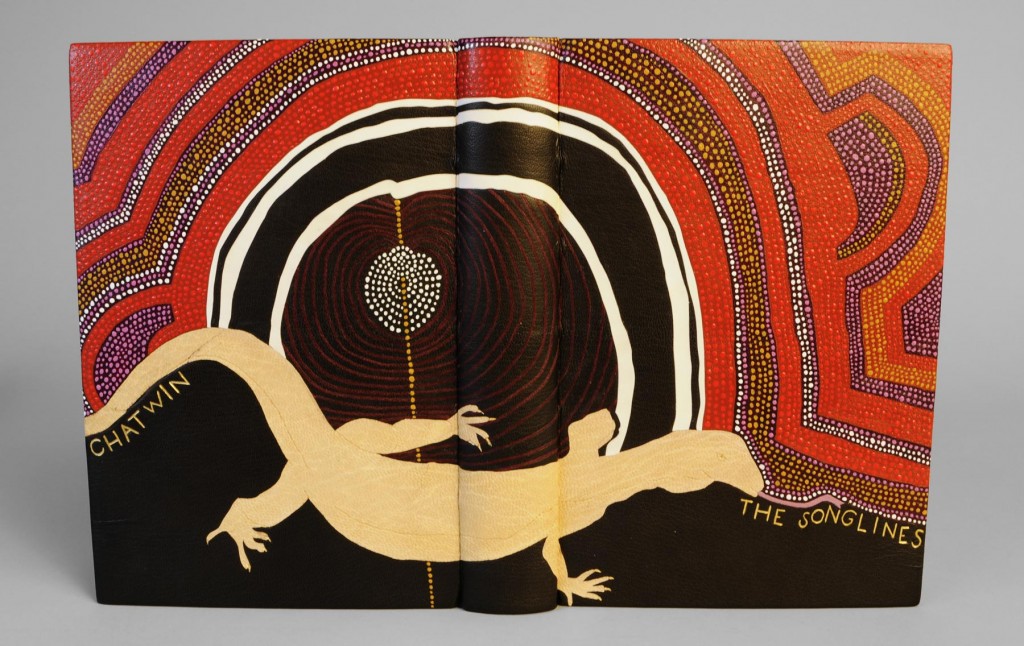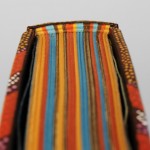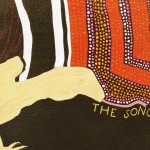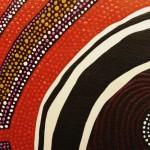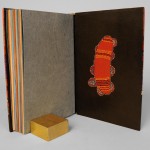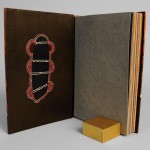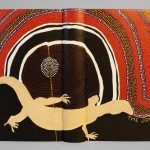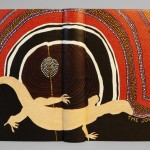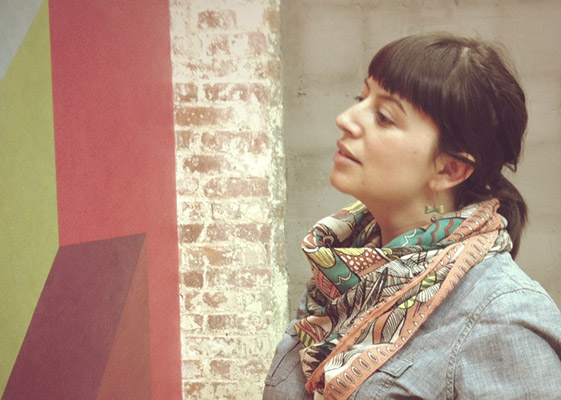In 1931, Sybil Pye bound this copy of Christina Rossetti’s Poems from Gregynog Press. A full leather binding of dark green goatskin with inlaid shapes of bright green and natural goatskin. Gold tooling is done with her custom brass tools. This binding is owned by the Wormsley Library.
Posts Tagged ‘bookbinding’
-
Bookbinder of the Month: Sybil Pye
September 2, 2012 by Erin Fletcher
-
September // Bookbinder of the Month: Sybil Pye
September 1, 2012 by Erin Fletcher
Last April, I had the honor of handling not one, but two bindings by Sybil Pye at the Fitzwilliam Museum in Cambridge, England. Her designs are striking with the use simple shapes and minimal color palette. Her execution is immaculate. Once a certified nursery school teacher, Sybil ran a private kindergarten from 1900-1903 until she fell ill. During this time she began teaching herself bookbinding through the guidance of Douglas Cockerell’s Bookbinding and the Care of Books. Early on in her career she decided on a forwarding style and stuck with it; a rather flat back sewn on raised cords with simple headbands, she never trimmed her text blocks on a plough or guillotine (any necessary trimming was done by hand) and finally her endpapers were usually plain white (which held true to the two examples I saw in England).
Her earliest known binding is from 1906, during this year she met poet T. Sturge Moore and artist Charles Ricketts, whom she kept as close friends throughout the years using them for design advice and occasionaly borrowing tools from Ricketts. Sybil used a small assortment of simple tools for finishing. Many of which she designed herself, in Women Bookbinders by Marianne Tidcombe, her collection of tools are shown illustrated (taken directly from her bindings). Up until 1925, Pye had produced around 50 bindings, many included blind or gold tooling, while 18 of them contained inlay work. At the time the majority of her works were bound in either natural or dyed pigskin with inlays of pigskin or vellum.
After 1925, she began to work exclusively in goatskin developing the style she is known for today. Her designs are often mislabeled as cubist inspired, but in fact she took many elements from Byzantine art, Charles Ricketts and the architectural drawings of Michelangelo. Her designs appear to be symmetrical with the central axis at the spine, but in fact there are subtle differences between the upper and lower covers.
Pye documented every book she bound from the beginning to the end of her career (1925-58), this included a list of 164 bindings. Her work was exhibited regularly from 1910-46. During the last ten years of her binding career, the quality of her work suffered due to an injury to her wrist that never healed properly. She died in 1958 at the age of 79.
-
My Hand…Flatland: A Romance of Many Dimensions
August 6, 2012 by Erin Fletcher
This fine binding of Flatland: A Romance of Many Dimensions by Edwin A. Abbott was completed for the Guild of Book Workers National Traveling show ‘Horizon‘. The show opened on June 8th at The Great Hall at the Margaret I. King Special Collections Library in the University of Kentucky and will soon be traveling to the Utah Museum of Fine Arts in Salt Lake City for the grand opening of the Standards Seminar on October 11, 2012.
I choose Flatland (not only because it’s one of my favorite science fictions novels), but I wanted to challenge myself by creating a 3-dimensional cover for the binding. Abbott’s novella is an observation on the social hierarchy of Victorian culture set in a fictional 2-dimensional world known as Flatland whose denizens are geometric figures which defines their place in the social ladder (women are depicted as lowly lines). Readers are guided through the text by a Square who dreams of other dimensions and challenges the authority of the high class Circle. As you move around the book, a sphere begins to emerge from the cover, illustrating the Square’s discovery of the third dimension.
The book has been bound in white buffalo skin, while the shapes are tooled onlays of both goat and buffalo with palladium outlines. A plastic lens was mounted to bass wood to give the right dimension for the sphere and adhered to the front board before covering. The order of the shapes was taken from the hierarchy listed in the book, while the layout was greatly inspired by Art Deco bindings of the early 1900s. The edges of the text block are gilt with Palladium leaf over a base of graphite; headbands have been sewn to mimic the color pattern created by the shapes.
The title was tooled with palladium using a series of line palettes and gouges to create a custom font.
At the beginning and end of the text block a pop-up of a cube is revealed representing another opportunity to transform a 2-dimensional object into a 3-dimensional one. The book is housed in an elaborate enclosure, in order to protect the raised area of the cover a spacer was constructed with a circle cutout. The spacer is lined with leather and white suede on the side facing the book and paper on the other. A chemise lined with white suede encompassed the spacer and book. All three components rest inside a leather spine clamshell box. The title and an image of the Flatlander’s home are tooled on the spine of the box.
-
My Hand…Talking to Myself
August 5, 2012 by Erin Fletcher
The millimeter binding (specifically Rubow) is my most favorite structure due to its simple elegance and traditional use of handmade paste paper. ‘Talking to Myself’ was bound with blank pages to be used as a journal. On this binding the head edge and tail edge are lined with maroon goatskin with leather wrapped headbands in the same leather. This paste paper was especially fun to design. By taking inspiration from Sarah Creighton, I aimed to create an alien landscape with rich oranges and browns.
The initial peachy layer of acrylic paint mixed with wheat starch paste and water was applied to the Hahnemuhle Ingres paper with a sponge brush. Once that dried completely the three other colors (of the same mixture) were applied separately with a piece of binder’s board in order to create the peaks and icicle-like forms. The title was smoke-tooled with handle letters. Smoke-tooling is a technique were the face of the tool is greased up with petroleum jelly and then stuck in a flame to collect carbon; the tool is then pressed into the cover leaving a trace of carbon behind. This give a rich, deep black impression of the tool.
-
My Hand…Fantasy & Nonsense
July 23, 2012 by Erin Fletcher
Fantasy & Nonsense is a compilation of poems from 19th century American poet James Whitcomb Riley elegantly letterpress printed on handmade paper with wood engravings by Robert Buchert. Riley was known for writing about rural Midwestern life to an audience of young readers. However, this unique collection portrays a devilishly playful side of Riley’s poetry through whimsical tales of things both eerie and peculiar. Buchert’s illustrations harmonize beautifully to the mischievous tune of Riley’s words.
This binding was completed for an exhibition put on by the Rocky Mountain Chapter of the Guild of Book Workers. Each submission will be judged for its level of craft and creativity. Results are still pending.
My inspiration for this binding came from two lines in the first poem “A Nonsense Rhyme” (sea of pale pink lemonade and cringing grass). The style of binding is referred to as Millimeter (specifically Rubow) where a millimeter of leather is exposed on the head and tail edge of the book. I wanted to keep true to the whimsical feel of the poetry, so I used two separate leather colors, blue-gray for the head and mauve for the tail.
The paste paper cover was created with a mixture of acrylic paint, distilled vinegar and sugar with accents of cucumber paper from Hiromi.
Check out more photos after the jump.
-
My Hand…The Songlines
July 17, 2012 by Erin Fletcher
In the second and final year at North Bennet Street School all students are given the same book in sheets (known as a set book) to complete as a fine binding. Given complete freedom over the materials and design, the inspiration should be derived from the set book. This year we bound copies of The Songlines by Bruce Chatwin.
My main inspiration came from an Aboriginal painting depicting imagery referred to as Dreaming. At the moment a mother is conscience of conception, the unborn child receives the spirit of a totemic ancestor connected with the location when awareness occurred. In a general sense, the Dreaming relates to a period before the memory of living creatures, during the time of the creator ancestors and supernatural beings. The paintings themselves are visual representations of the artist’s individual spiritual beliefs.
